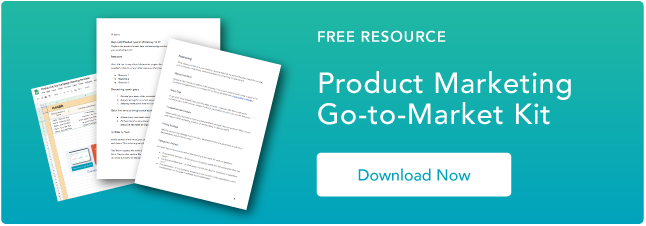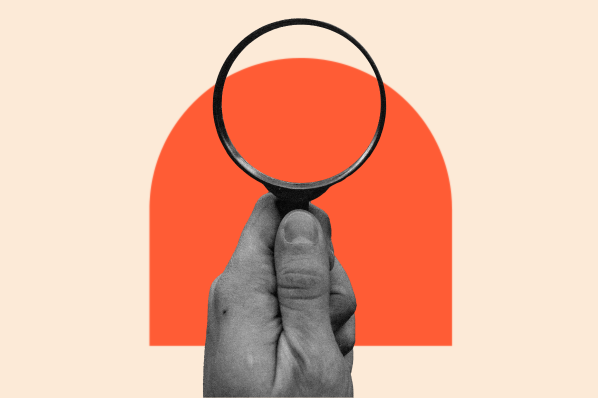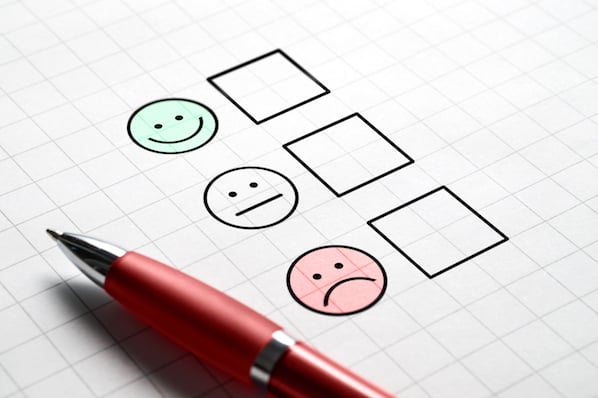In this post, we'll discuss what a Scrum product owner is and how you can leverage this person on your product team.
Table of Contents
- What is a Scrum product owner?
- Scrum Product Owner Responsibilities
- Scrum Product Owner Skills and Traits
- Who Scrum Product Owners Work With
- Sample Scrum Product Owner Job Description
What is a Scrum product owner?
A Scrum product owner is a leader for their team, an advocate for their customers, and an expert on their product backlog.

Scrum leads use the Agile approach to software creation. If you're unfamiliar with this approach, here's a quick breakdown.
Scrum is a product development method that considers input from every business stakeholder.
Scrum teams are the engineers and developers who come together to agree on goals for a 30-day project, or "sprint." They then work together with the product manager and product owner to produce the product by the designated deadline.
Product Owner
I mentioned product owner (minus "Scrum"), so you may be wondering what the difference is between the two.
The main difference lies in the way they work. Product owners are typically working toward the product launch, and all of the tasks lead up to that one moment.
On the other hand, Scrum product owners use that Agile approach that I mentioned above. They work to deliver work in sprints which are smaller consumable increments.
Often, there's a Scrum product owner and a traditional product owner working together toward the finish line. One owns the the individual product sprints, and the other owns the product launch at large.
Let's talk more about the role of a Scrum product owner.
Scrum Product Owner Role Description
Product Visionary
The Scrum product owner develops the product's technical and conceptual layout. They come up with the idea of what to build, then communicate that blueprint to the product development teams.
The product owner is then responsible for maximizing the value of the product or feature during the development process. Product owners do this by brainstorming new features, promoting team collaboration, and prioritizing customer feedback.
Marketplace Expertise
Scrum product owners demonstrate an expert-level understanding of the company's products as well as their target audience.
They focus on creating customer-centric features and are motivated by their customers' success. It's their job to understand the needs, roadblocks, and reactions that customers experience when interacting with their company.
Additionally, Scrum product owners must possess a deep understanding of the company's product management system.
It's vital that they recognize the capabilities of their development teams so that they can set ambitious, but realistic goals.
Without this area of expertise, product owners may become overbearing or push their engineering and design teams past their bandwidth.
Why You Need a Scrum Product Owner
Voice of the Customer
Scrum product owners are an essential position on Scrum teams because they act as the voice of the customer. It's their job to consider the customer's needs and communicate those core values to product management team members.
Product owners are constantly gathering customer reviews then filtering that feedback into the development process. By doing so, designers and engineers can create better products that exceed customer expectations.
Quality Control
During product development, Scrum product owners also act as a level of quality control. They make sure that the finished result matches the original intent of the product.
If the project seems to be going off track, the product owner can reprioritize team efforts to meet their initial goals. When the development is completed, the product owner has the final authorization to ensure the product or feature fulfills its intent.
Organization
When creating a new product, there can sometimes be confusion over how to guide the development process.
Scrum product owners lead the project by organizing engineering teams and creating long-term goals that employees can work towards.
They motivate product management by including quick team-building activities that encourage teams to meet deadlines.
And by creating this system of open communication, teams can share information quickly to make the development process more efficient.
If you want to learn more about what a Scrum product owner is, check out the video from Atlassian below to get a better understanding of what they do and where they sit on the product team.
We'll discuss Scrum product owner responsibilities in more detail next.
Scrum Product Owner Responsibilities

Define Product Roadmap
One of the core Scrum product owner responsibilities is developing and refining the product roadmap for the team.
Remember, the Scrum product owner holds the overall product vision, so they're in charge of defining how best to reach that vision.
The product roadmap is an action plan of action that aligns the team around the specific product goals, how they will be achieved, and how progress will be assessed along the way.
At this stage, team priorities are clearly outlined and the direction of the project is set.
Anyone on the team should be able to refer back to the product roadmap to answer questions like:
- Who is in charge of which task?
- What stage is the project in?
- How much additional progress is required to reach the goal?
Manage Product Backlog
To create products that meet customer needs, Scrum product owners record customer roadblocks and search for their solutions. They do this by creating and maintaining a product backlog that's shared with product management.
If developers have questions about the product backlog, the product owner is responsible for clarifying those details to their teammates.
Research Target Audience and Marketplace
When updating the product backlog, the Scrum product owner also studies the new trends arising with the target audience and their marketplace.
They conduct studies like consumer behavior analyses and research user preferences in the product usage reports.
These quantitative reports help product owners confirm the patterns they're observing when studying customer stories. If trends can be statistically confirmed, Scrum product owners can be more confident in their proposed ideas.
Motivate Product Development
Another major responsibility for Scrum product owners is to encourage goal attainment. It's their job to keep team members dedicated to meeting the benchmarks set in the product roadmap phase.
One way that Scrum product owners push development teams to achieve success is by conducting sprint preparation meetings and daily stand-ups. These regular check-ins help keep teams focused on their progression.
Now, let's get into some of the skills and traits that any great Scrum product owner has.
Scrum Product Owner Skills and Traits
Team-Oriented
While the product owner may be the leader of the project, the best owners are motivated by their team's success.
Even though they come up with the overall design, product owners need to be flexible in sharing their ideas and encourage teammates to look for improvements.
Good product owners don't micromanage their teams. Instead, they challenge their employees to optimize the product. This keeps employees actively engaged because they feel more invested in the product's success.
Effective Communicator
The Scrum product owner's job is to translate customer needs into a product that development teams can produce.
This requires product owners to be excellent team communicators because their product's vision must be clear to all company stakeholders.
They also provide tough criticisms to hard-working engineers who they're relying on for meeting deadlines. Product owners perform this balancing act continuously throughout the development process to appease stakeholder interests.
Business Savvy
For a product to be successful in its marketplace, it has to be unique from its competitors.
To create a product that stands out from the rest, Scrum product owners must possess a thorough understanding of the customer as well as their market.
Successful product owners do this by being customer-focused which places the customer's success at the forefront of their decision-making process.
Adaptable
Speaking of the decision-making process, Scrum product owners have to be flexible and quick on their feet when it comes to making decisions.
They can't be afraid to adjust course if the project isn't meeting the vision they originally intended.
Sometimes, this means tweaking the product strategy or timeline based on new consumer trends or the quality of the product output.
These skills come in handy because Scrum product owners work cross-functionally with a lot of different teams. We'll discuss a few of those next.
Who Scrum Product Owners Work With
Cross-Departments
Scrum product owners work with marketing, sales, and customer service teams to obtain a complete view of the customer's experience.
Marketing teams have useful consumer reports and updated information on marketplace trends that outline customer buying behaviors.
Sales teams work directly with customers and can share information on specific roadblocks that are frustrating potential leads.
And customer support teams provide first-person insight into the user's experience with the product.
Upper Management
As the leader of the project, the product owner acts as the liaison between the product management teams and upper management.
They provide managers with updates on their progress and explain any changes being made to the development process. They also communicate projected deadlines as well as their expectations for when the product will be completed.
External Stakeholders
While the customer's success is the primary focus, Scrum product owners must consider the needs of all their external stakeholders.
This includes stakeholders who are financially invested in the company and are concerned with the business value of the product.
To appease these groups, product owners use first-party data to demonstrate the potential benefits of their new product or feature.
Sample Scrum Product Owner Job Description
Scrum Product Owner, Company A
About the Role: Company A is seeking a highly organized, team-oriented Scrum product owner to join our team. You're a great fit for this role if you enjoy defining the vision for timely and innovative products that provide value, challenge competitors, and delight the customer.
Responsibilities:
- Create the vision for the product and translate that vision into actionable results
- Manage successful product development and execution based on the priorities outlined in the roadmap
- Collaborate with cross-functional teams including marketing, sales, and customer service to define product goals
- Lead daily and weekly stand-ups to track project milestones, and keep leadership up to date on progress
- Facilitate the escalation of product issues or roadblocks to quickly remove impediments
Qualifications:
- 2-3 years of product owner experience
- Strong knowledge of the Agile approach and framework
- Team-oriented, effective communicator, business savvy, and adaptable
Leveraging a Scrum Product Owner at Your Company
Scrum product owners are high-value specialists that can help you develop products that are truly centered around the wants and needs of your customers.
If this role feels like a good fit for your product team, it may be time to consider making the hire.
Editor's note: This post was originally published in November 2019 and has been updated for comprehensiveness.
User Testing





![5 Qualitative Research Methods Every UX Researcher Should Know [+ Examples]](https://53.fs1.hubspotusercontent-na1.net/hubfs/53/qualitative%20reseach%20methods_featured.png)
![How the Serial Position Effect Influences Your Users [Cheat Sheet]](https://53.fs1.hubspotusercontent-na1.net/hubfs/53/shoppers%20making%20purchasing%20decisions%20off%20of%20the%20serial%20position%20effect.jpg)




